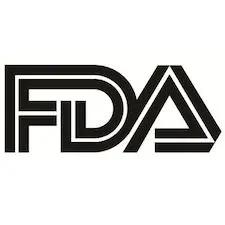Article
Hyponatremia Clinical Update, July 28, 2011
An update on the latest in clinical research in hyponatremia.
Hyponatraemia During Psychopharmacological Treatment: Results of a Drug Surveillance Program
A large study has underscored the risk of hyponatremia in psychiatric in-patients, especially those that are elderly, being treated with selective serotonin reuptake inhibitors and diuretics.
The AMSP (Arzneimittelsicherheit in der Psychiatrie) is a multicenter drug surveillance program that assesses severe or new adverse drug reactions during psychopharmacological treatment in psychiatric inpatients.
Researchers from the department of psychiatry at the Medical University of Graz, Austria, reported on a total of 263,864 psychiatric inpatients monitored from 1993 to 2007 in 80 psychiatric hospitals in Germany, Switzerland, and Austria. The research was published in the International Journal of Neuropsychopharmacology.
“During this period plasma sodium levels below 130 mmol/l (severe hyponatremia [HN] according to AMSP) were reported in 93 patients (relative frequency 0.04%). On average, the plasma sodium levels of all cases were 119.7 mmol/l (±5.8 s.d.); median 121 mmol/l (range 104-129 mmol/l). Patients who showed no clinical signs (n=65, 70%) had a mean sodium level of 121.3 mmol/l (±5.0 s.d.); median 122 mmol/l (range 114-129 mmol/l),” the researchers wrote in the study abstract.
“By contrast, patients with clinical symptoms (n=28, 30%) had a mean sodium level of 116.0 mmol/l (±6.0 s.d.); median 117 mmol/l (range 104-125 mmol/l). HN was mainly observed during treatment with selective serotonin reuptake inhibitors (SSRIs) (0.06%), Serotonin noradrenaline reuptake inhibitors (SNRIs) (0.08%), carbamazepine (0.10%) and oxcarbazepine (1.29%); the highest rate was found for oxcarbazepine,” the researchers added.
Antipsychotics, mirtazapine, and tricyclic antidepressants were only rarely involved in HN (0.003-0.005%). Combinations of several drugs known to induce HN significantly increased the risk of HN. For example, there was a more than a 10-fold increased risk for SSRI+diuretics+ACE inhibitors (0.37%) vs. SSRI given alone (0.02%). “This is clinically relevant because such combinations, e.g., SSRI+diuretics may occur especially in elderly patients, who are in general at higher risk of developing HN,” they concluded.
The Impact of Anesthesia on Glycine Absorption in Operative Hysteroscopy: A Randomized Controlled Trial
Compared with general anesthesia, local anesthesia with sedation is associated with less glycine absorption and should be considered the preferred method of anesthesia for operative hysteroscopy, according to a new study published in Anesthesia & Analgesia.
Operative hysteroscopy requires the use of a distension medium and its absorption can lead to serious consequences from intravascular volume overload and water intoxication.
Researchers headed by Pascale Ouellet, MD, in the department of anesthesiology at the Centre Hospitalier Universitaire de Québec, Canada, compared the impact of two types of anesthesia on the absorption of glycine solution in operative hysteroscopy.
The researchers conducted a randomized controlled trial over a 17-month period. Eligible patients undergoing operative hysteroscopy for abnormal uterine bleeding were randomized into two groups, a general anesthesia group and a local anesthesia with sedation group.
“The primary outcome was the median absorption of the glycine solution (10th-90th percentile) measured with an automated tandem canister system. Secondary outcomes included incidence of absorption >1000 mL, discontinued surgery because of excessive absorption, median change in serum sodium, postoperative hyponatremia, and patients’ postoperative quality of life at 24 hours (Eight-item Short Form Health Survey questionnaire),” the researchers wrote in the study abstract.
Of 142 eligible patients, 95 agreed to participate and were randomized. Women who underwent general anesthesia had a higher median absorption of the glycine solution (10th-90th percentile) compared with women who underwent local anesthesia with sedation (480 mL [76-1300 mL] vs. 253 mL [70-728 mL]; P = 0.005).
“General anesthesia was also associated with a higher rate of glycine solution absorption (>1,000 mL [20% vs 4%; P = 0.009]) and a more rapid rate of decrease in serum sodium (≥10 mEq/L [8% vs 0%; P = 0.005]) than local anesthesia with sedation. Postoperative quality of life measures as rated by the patients were comparable between the two groups,” the researchers concluded.
SourcesHyponatraemia during psychopharmacological treatment: results of a drug surveillance programme [International Journal of Neuropsychopharmacology]The Impact of Anesthesia on Glycine Absorption in Operative Hysteroscopy: A Randomized Controlled Trial [Anesthesia & Analgesia]




